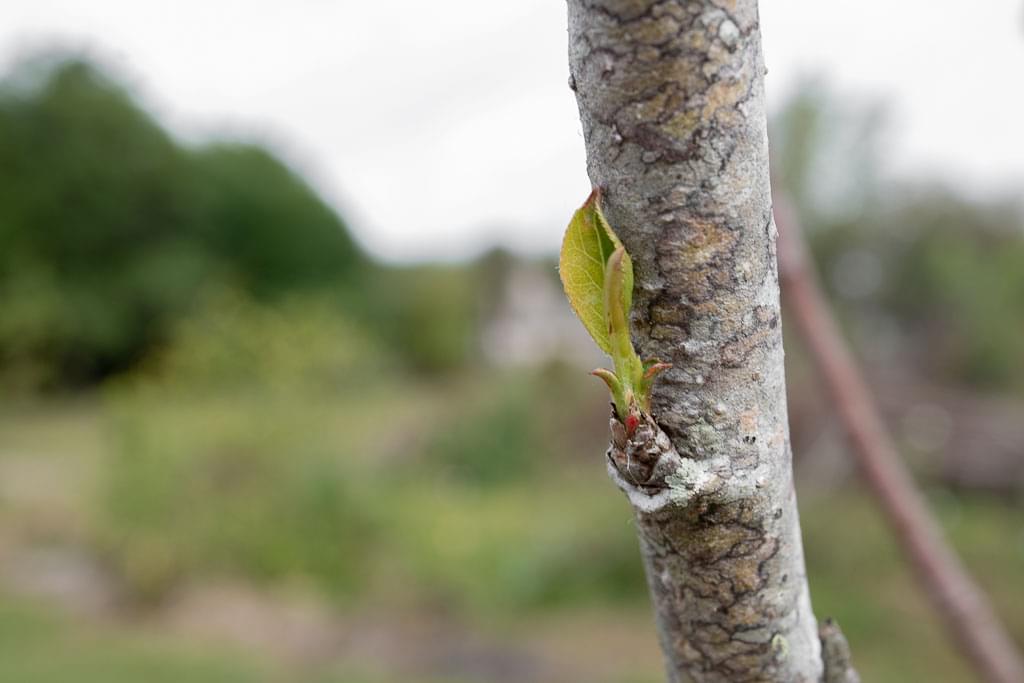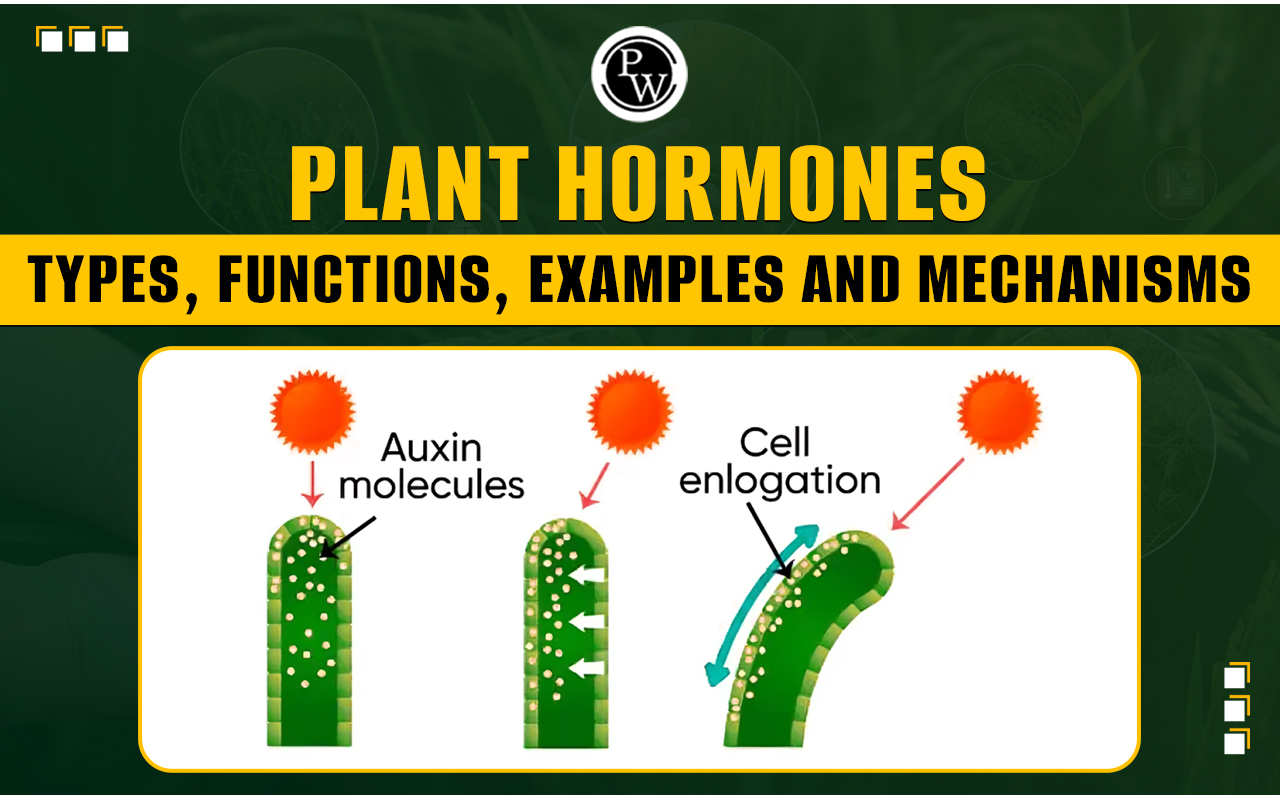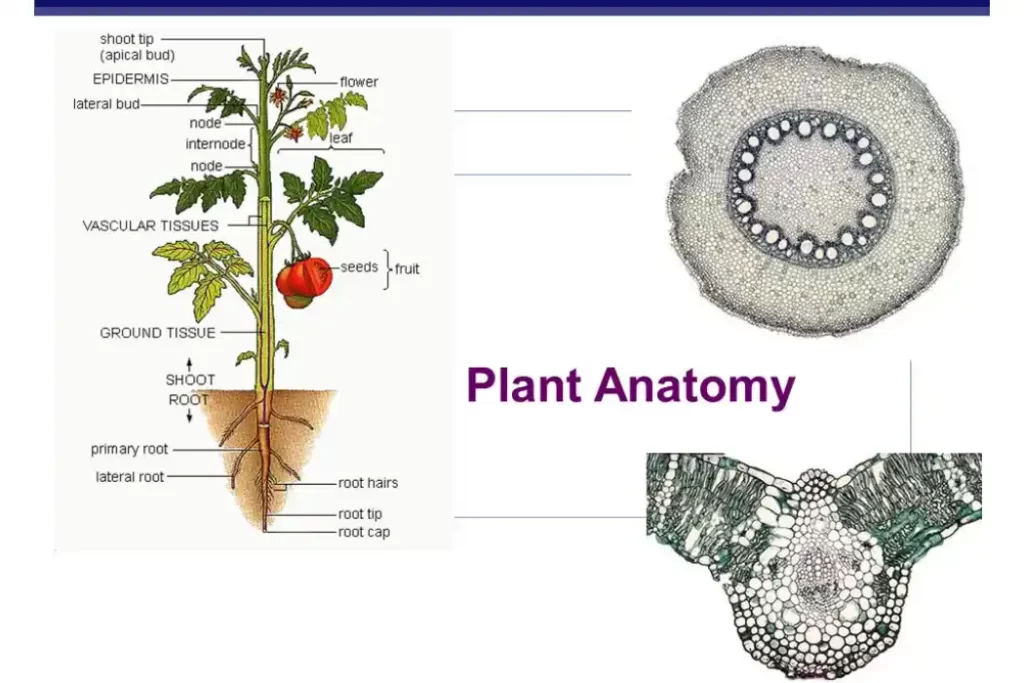
Understanding Plant Dormancy: A Comprehensive Exploration
Plant dormancy, a fascinating and crucial survival strategy, allows plants to withstand unfavorable environmental conditions. It’s not simply a state of sleep, but rather a complex physiological process that enables plants to conserve energy and resources until conditions are more favorable for growth and reproduction. This article delves into the intricacies of plant dormancy research, exploring its mechanisms, ecological significance, and implications for agriculture and horticulture.
The Science Behind Plant Dormancy
At its core, plant dormancy is a period of arrested growth. This cessation of activity isn’t a passive response to external cues, but an actively regulated process involving a cascade of hormonal and genetic changes. Understanding these underlying mechanisms is a central focus of plant dormancy research.
Hormonal Regulation
Hormones play a pivotal role in initiating and maintaining dormancy. Abscisic acid (ABA) is widely recognized as the primary dormancy-inducing hormone. Elevated ABA levels trigger a series of physiological changes, including the closure of stomata (reducing water loss), the accumulation of storage proteins, and the suppression of growth-promoting hormones like gibberellins. Ethylene, brassinosteroids and jasmonates also play important roles in dormancy regulation. However, the interplay between different hormones is complex and varies depending on the plant species and environmental conditions. Research continues to unravel the specific roles of each hormone and how they interact to control dormancy.
Genetic Control
The genetic basis of plant dormancy is equally complex. Numerous genes are involved in regulating dormancy induction, maintenance, and release. These genes control various aspects of the dormancy process, including hormone biosynthesis and signaling, carbohydrate metabolism, and stress tolerance. Researchers use techniques like quantitative trait loci (QTL) mapping and genome-wide association studies (GWAS) to identify genes associated with dormancy traits. Understanding the genetic architecture of dormancy can provide valuable insights for breeding plants with improved dormancy characteristics, such as enhanced winter hardiness or controlled flowering time.
Environmental Cues
Plants respond to a variety of environmental cues to initiate dormancy. Shortening day length (photoperiod) and decreasing temperatures are the most common triggers. These cues are perceived by specialized photoreceptors and temperature sensors, which then initiate the hormonal and genetic changes that lead to dormancy. The specific environmental cues that trigger dormancy can vary depending on the plant’s geographic origin and evolutionary history. For example, plants from temperate regions are typically more sensitive to photoperiod and temperature changes than plants from tropical regions. Furthermore, the duration and intensity of these cues can also influence the depth and duration of dormancy.
Types of Plant Dormancy
Plant dormancy isn’t a monolithic phenomenon. It manifests in different forms, each with its own characteristics and underlying mechanisms. Understanding these different types of dormancy is crucial for managing plant growth and development effectively.
Endodormancy (True Dormancy)
Endodormancy, also known as true dormancy or deep dormancy, is a physiological state in which growth is inhibited by internal factors, even when external conditions are favorable. This type of dormancy is most common in temperate woody plants, such as fruit trees and deciduous shrubs. Endodormancy is typically induced by shortening day length and decreasing temperatures in the fall. The plant’s internal physiological state prevents it from resuming growth until it has experienced a sufficient period of chilling temperatures (vernalization). The chilling requirement varies depending on the plant species and cultivar. Once the chilling requirement is met, the plant becomes responsive to warm temperatures and can resume growth in the spring. The molecular mechanisms underlying endodormancy are complex and involve changes in gene expression, hormone levels, and carbohydrate metabolism.
Paradormancy (Correlative Inhibition)
Paradormancy, also known as correlative inhibition, is a type of dormancy in which growth is inhibited by other plant parts. A classic example is apical dominance, where the terminal bud inhibits the growth of lateral buds. This inhibition is mediated by plant hormones, primarily auxin. Auxin produced in the terminal bud is transported down the stem, suppressing the growth of lateral buds. When the terminal bud is removed, the lateral buds are released from inhibition and begin to grow. Paradormancy is also observed in other plant parts, such as roots and tubers. For example, the growth of potato tubers is inhibited by the presence of the mother plant. Once the connection to the mother plant is severed, the tubers can sprout. Unlike endodormancy, paradormancy is not typically associated with changes in gene expression or carbohydrate metabolism. Instead, it is primarily regulated by hormonal signals.
Ecodormancy (Quiescence)
Ecodormancy, also known as quiescence, is a temporary state of dormancy induced by unfavorable environmental conditions. Unlike endodormancy, ecodormancy is not associated with changes in internal physiological state. Instead, growth is simply inhibited by the lack of suitable conditions, such as low temperature, drought, or nutrient deficiency. When conditions improve, the plant can resume growth immediately. Ecodormancy is common in both herbaceous and woody plants. For example, many annual plants enter ecodormancy during the winter months. Their seeds remain dormant in the soil until the following spring, when warm temperatures and adequate moisture trigger germination. Similarly, many trees and shrubs enter ecodormancy during periods of drought. Their leaves may wilt and their growth may slow down or stop altogether. However, they can resume growth quickly once the drought ends.
Ecological Significance of Plant Dormancy
Plant dormancy plays a crucial role in the survival and distribution of plants in diverse ecosystems. It allows plants to persist through periods of environmental stress, such as winter cold, summer drought, or seasonal flooding. Without dormancy, many plants would not be able to survive in these environments.
Winter Hardiness
Dormancy is essential for winter hardiness in temperate and boreal regions. Plants that enter dormancy in the fall can withstand freezing temperatures and other winter stresses. The physiological changes associated with dormancy, such as the accumulation of antifreeze proteins and the dehydration of cells, help to protect plant tissues from damage. Winter hardiness is a complex trait that is influenced by both genetic and environmental factors. Researchers are studying the genetic basis of winter hardiness to develop plants that are more resistant to cold damage.
Drought Tolerance
Dormancy can also enhance drought tolerance in arid and semi-arid regions. Plants that enter dormancy during periods of drought can conserve water and energy, allowing them to survive until the next rainfall. Drought-induced dormancy is often associated with leaf abscission (shedding of leaves), which reduces water loss through transpiration. Some plants also develop specialized structures, such as bulbs or tubers, to store water and nutrients during drought periods. Understanding the mechanisms of drought-induced dormancy can help to develop crops that are more resilient to drought stress.
Seasonal Flooding
In wetland environments, dormancy can protect plants from the damaging effects of seasonal flooding. Plants that enter dormancy during periods of flooding can survive the oxygen deprivation and other stresses associated with inundation. Some plants develop specialized adaptations, such as aerenchyma (air-filled tissue), to facilitate oxygen transport to submerged roots. Dormancy can also help plants to avoid competition with other species that are better adapted to flooded conditions. Research on flood tolerance is becoming increasingly important as climate change leads to more frequent and intense flooding events.
Agricultural and Horticultural Applications of Plant Dormancy Research
Understanding plant dormancy has significant implications for agriculture and horticulture. By manipulating dormancy, growers can control plant growth and development, improve crop yields, and extend the growing season.
Breaking Dormancy
In some cases, it is desirable to break dormancy prematurely. For example, fruit growers may want to induce early flowering in order to harvest their crops earlier in the season. Several methods can be used to break dormancy, including chemical treatments, pruning, and temperature manipulation. Chemical treatments, such as the application of hydrogen cyanamide, can stimulate bud break by disrupting the hormonal balance in the plant. Pruning can remove apical dominance, allowing lateral buds to grow. Temperature manipulation, such as exposing plants to warm temperatures or chilling them artificially, can also break dormancy. The choice of method depends on the plant species, the desired outcome, and the environmental conditions.
Inducing Dormancy
Conversely, it may be desirable to induce dormancy in certain situations. For example, nurseries may want to induce dormancy in their plants before shipping them to customers. This can help to protect the plants from damage during transport and storage. Dormancy can be induced by manipulating environmental conditions, such as shortening day length or lowering temperatures. Chemical treatments, such as the application of abscisic acid, can also be used to induce dormancy. The optimal conditions for inducing dormancy vary depending on the plant species.
Controlling Flowering Time
Dormancy plays a critical role in controlling flowering time in many plants. By understanding the environmental cues that trigger dormancy and the genetic mechanisms that regulate flowering, growers can manipulate flowering time to optimize crop yields. For example, breeders can select for plants with specific dormancy characteristics, such as a short chilling requirement or a late flowering time. They can also use techniques like grafting and photoperiod manipulation to control flowering time. Precise control of flowering time is essential for maximizing crop productivity and ensuring a stable food supply.
Improving Winter Hardiness
Plant dormancy research can also contribute to improving winter hardiness in crops. By understanding the genetic and physiological mechanisms of winter hardiness, breeders can develop plants that are more resistant to cold damage. This is particularly important in regions with harsh winters, where crop losses due to cold damage can be significant. Researchers are using techniques like marker-assisted selection and genetic engineering to develop winter-hardy crops. These efforts have the potential to significantly increase crop yields and improve food security in cold climates.
Current Trends in Plant Dormancy Research
Plant dormancy research is a dynamic and rapidly evolving field. Several current trends are shaping the direction of future research.
Molecular Mechanisms of Dormancy
A major focus of current research is to elucidate the molecular mechanisms underlying dormancy. Researchers are using advanced techniques like genomics, transcriptomics, proteomics, and metabolomics to identify the genes, proteins, and metabolites that are involved in dormancy regulation. These studies are providing a more detailed understanding of the complex biochemical pathways that control dormancy. This knowledge can be used to develop new strategies for manipulating dormancy in crops and other plants.
Role of Epigenetics
Epigenetics, the study of heritable changes in gene expression that do not involve changes in the DNA sequence, is emerging as an important area of plant dormancy research. Epigenetic modifications, such as DNA methylation and histone modification, can influence gene expression and play a role in regulating dormancy. Researchers are investigating how epigenetic changes are induced by environmental cues and how they contribute to the establishment and maintenance of dormancy. Understanding the role of epigenetics in dormancy can provide new insights into the plasticity of plant development and adaptation.
Climate Change Impacts
Climate change is having a significant impact on plant dormancy. Changes in temperature and precipitation patterns are altering the timing and duration of dormancy in many plants. Warmer winters can reduce chilling accumulation, leading to delayed or erratic bud break. More frequent and intense droughts can induce premature dormancy. These changes can have significant consequences for plant growth, development, and survival. Researchers are studying the effects of climate change on plant dormancy and developing strategies to mitigate these impacts. This includes breeding plants that are more resilient to climate change and developing new management practices that can help plants to adapt to changing environmental conditions.
Dormancy in Seeds
While much of the research focuses on bud dormancy, seed dormancy is also a critical area of investigation. Seed dormancy prevents germination under unfavorable conditions, ensuring that seedlings emerge when conditions are optimal for survival. Understanding the mechanisms of seed dormancy is important for improving crop establishment and preventing weed infestations. Researchers are studying the hormonal and genetic factors that regulate seed dormancy and developing new methods for breaking seed dormancy. This research has the potential to improve crop yields and reduce the need for herbicides.
Future Directions in Plant Dormancy Research
Plant dormancy research is poised to make significant advances in the coming years. Several key areas of research are likely to drive future progress.
Systems Biology Approaches
Systems biology approaches, which integrate data from multiple levels of biological organization, are becoming increasingly important in plant dormancy research. By combining genomic, transcriptomic, proteomic, and metabolomic data, researchers can develop comprehensive models of dormancy regulation. These models can be used to predict how plants will respond to different environmental conditions and to identify new targets for manipulating dormancy. Systems biology approaches have the potential to revolutionize our understanding of plant dormancy and to accelerate the development of new technologies for improving crop production.
CRISPR-Cas9 Technology
The CRISPR-Cas9 gene editing technology is a powerful tool for studying plant dormancy. CRISPR-Cas9 allows researchers to precisely edit genes that are involved in dormancy regulation. This can be used to create plants with altered dormancy characteristics, such as a shorter chilling requirement or a delayed flowering time. CRISPR-Cas9 technology can also be used to study the function of specific genes in dormancy. By knocking out or knocking in genes of interest, researchers can determine their role in the dormancy process. CRISPR-Cas9 technology has the potential to greatly accelerate plant dormancy research and to lead to the development of new crops with improved dormancy characteristics.
Integration of Phenomics and Genomics
Phenomics, the study of plant phenotypes (observable characteristics), is becoming increasingly integrated with genomics in plant dormancy research. High-throughput phenotyping technologies, such as automated imaging and sensor-based measurements, allow researchers to rapidly and accurately assess plant dormancy traits. By combining phenomic data with genomic data, researchers can identify genes that are associated with specific dormancy traits. This information can be used to develop molecular markers for breeding plants with improved dormancy characteristics. The integration of phenomics and genomics has the potential to greatly accelerate the development of new crops that are better adapted to changing environmental conditions.
Translational Research
Translational research, which focuses on translating basic research findings into practical applications, is becoming increasingly important in plant dormancy research. This includes developing new technologies for manipulating dormancy in crops, improving crop yields, and enhancing food security. Translational research also involves working with growers and other stakeholders to ensure that research findings are effectively disseminated and adopted. By focusing on translational research, plant dormancy researchers can make a significant contribution to addressing global challenges such as climate change and food security.
Conclusion
Plant dormancy is a complex and fascinating phenomenon that plays a crucial role in the survival and distribution of plants. Understanding the mechanisms of plant dormancy is essential for managing plant growth and development effectively. Plant dormancy research has significant implications for agriculture and horticulture, allowing growers to control plant growth and development, improve crop yields, and extend the growing season. Current research is focused on elucidating the molecular mechanisms of dormancy, understanding the role of epigenetics, and assessing the impacts of climate change. Future research will likely focus on systems biology approaches, CRISPR-Cas9 technology, the integration of phenomics and genomics, and translational research. By continuing to invest in plant dormancy research, we can unlock nature’s secrets and develop new technologies for improving crop production and enhancing food security in a changing world.


